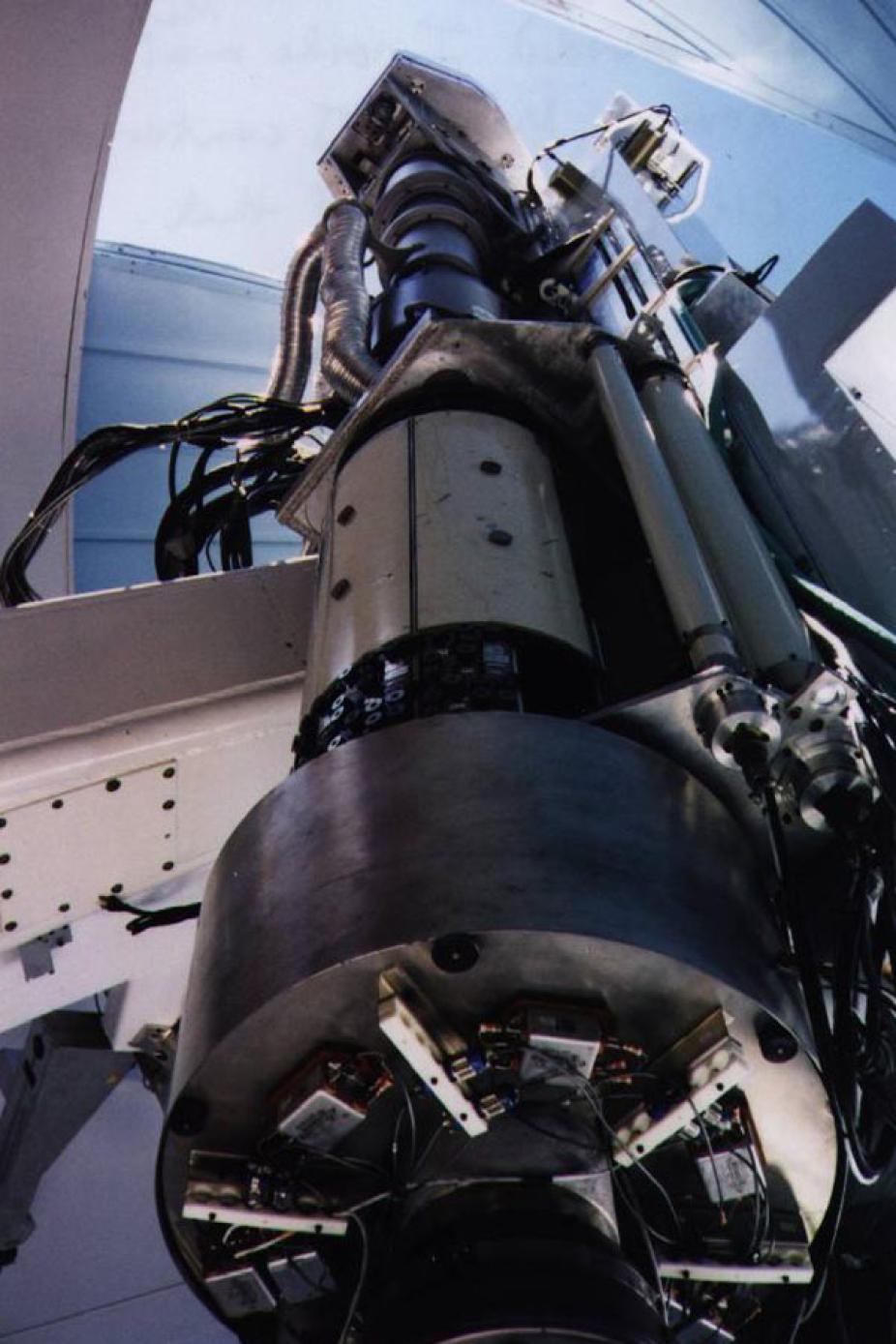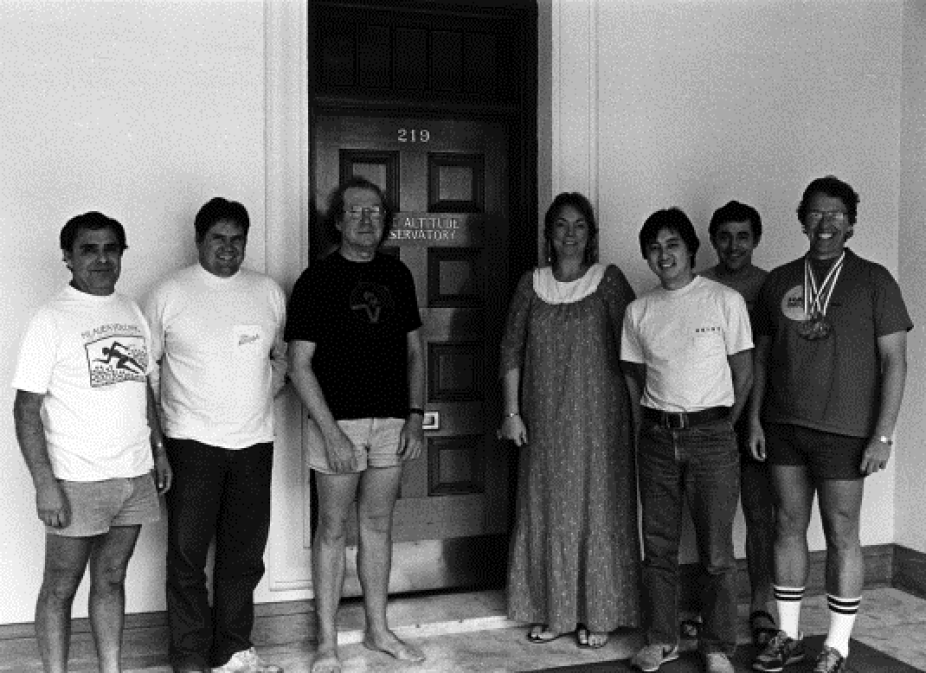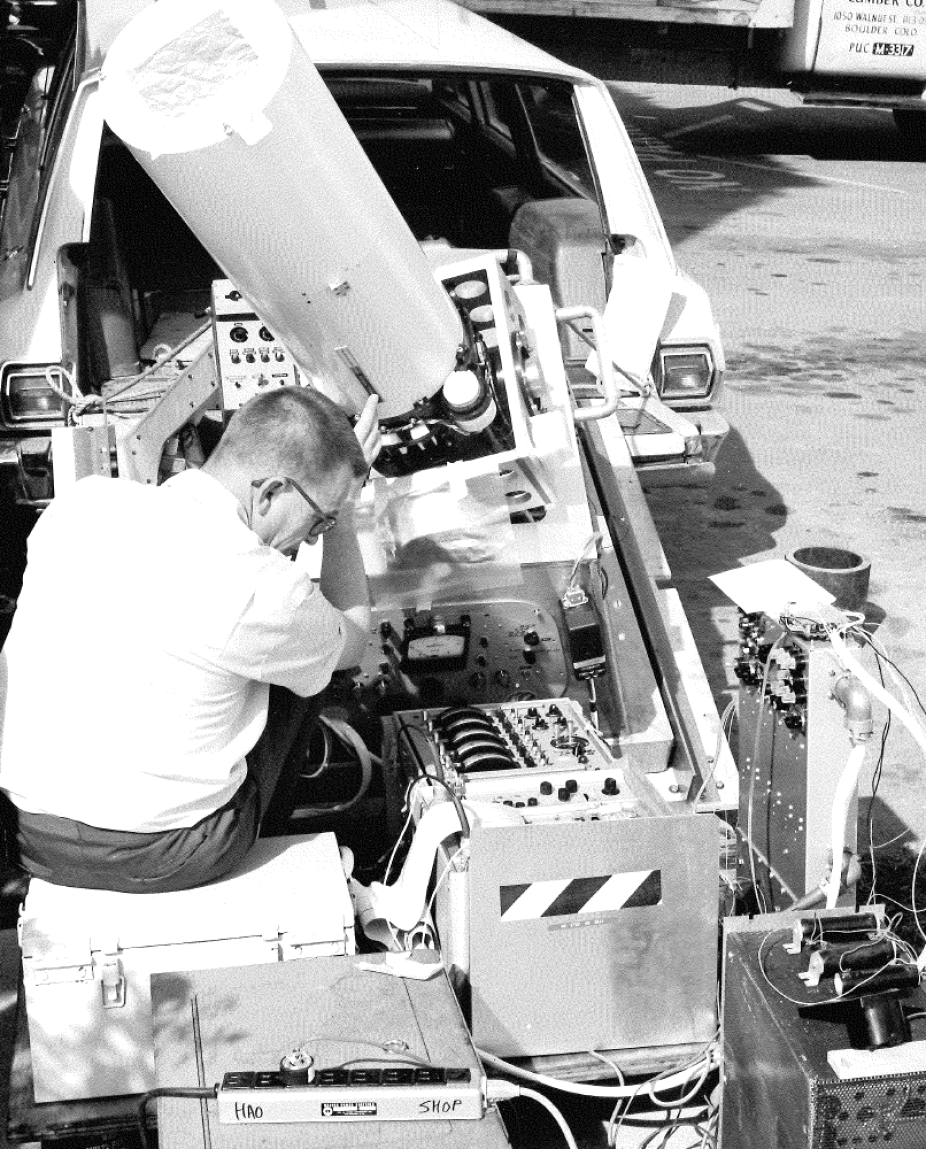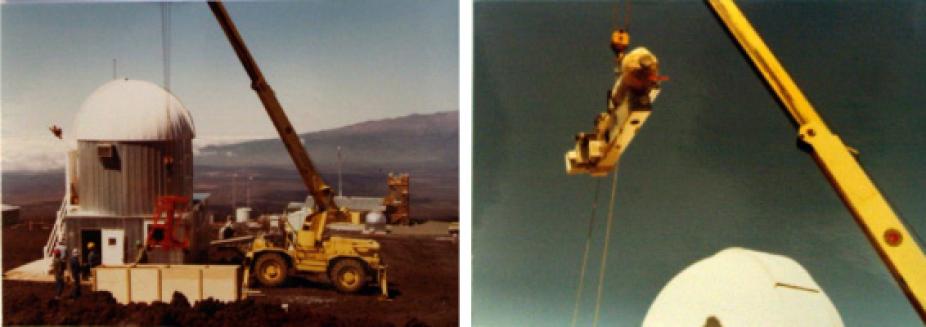The Mauna Loa Solar Observatory (MLSO) K-coronameter (Mk4), was decommissioned on August 2, 2013, to be replaced by the new COSMO K-coronagraph.

Mk3 on the MLSO spar
With the approach of the SOlar Heliophysics Observatory (SOHO) Mission, HAO designed and implemented upgrades to the Mk3, known as Mk4, which included the installation of a CCD detector to replace the original diode array, a better polarizing beam splitter, and mechanically stable calibration tilt plate registration. Mk4 has continued to operate until the present. The Mk3/4 K-coronameter has provided 33 years of low coronal observations from the maximum of solar cycle 20 to the maximum of solar cycle 24 acquiring over a half a million images, recording over 1000 CMEs, and observing the brightness and morphological changes of the corona with solar cycle activity.

The Mk3-Koronameter team in Hawaii. L to R: Charlie Garcia, Ed Lundin, Paul Seagraves, Cheryl Baker, Eric Yasukawa, David Sime, Dick Fisher.

HAO Mk3 lead engineer, Bob Lee, setting up the HAO eclipse telescope.

The Mk3 K-coronameter (right) and ancillary equipment are lowered into the Mauna Loa dome in 1979.
The K-coronameter will be replaced by the COSMO K-coronagraph (K-cor), an entirely new instrument which will produce images with 10 times better signal-to-noise and 12 times faster image cadence than the K-coronameter. K-cor will begin providing data in the fall of 2013.
All of the Mk3/Mk4 observations since 1980 are available from HAO’s Mauna Loa homepage
Updates
August 6th: The Mk4 Coronameter has been removed from the MLSO spar! Here is a time-lapse of the operation:
The Mauna Loa Solar Observatory is getting a couple of new instruments in the next year and the first - an instrument to study the large-scale solar corona and launch of coronal mass ejections (CMEs) - is about to be shipped from Boulder to Hawaii. Naturally, we have to take off the old before installing the new so this time-lapse shows the old "ACOS" system (including the Mk 4 Coronagraph) being taken off of the Sun-pointing spar in the observatory dome.
HAO recognizes the many scientists, engineers, observers and support staff who were responsible for the design, fabrication, testing, software, operation, repair, calibration, processing and dissemination of the Mk3/Mk4 instrument and observations:
Richard Fisher, and in reverse alphabetical order: Eric Yasukawa, Oran (Richard) White, Lisa Waters, F. Telang, Allen Stueben, Jack Streete, Kim Streander, Andrew Stanger, Ackley Smith, Leonard Sitongia, David Sime, Rick Sheffer, Paul Seagraves, Paula Rubin, Greg Rose, Steve Rogers, Kristine Rock, Art Poland, Gordon Newkirk, Richard Munro, Greg Muir, C. Muir, Robert MacQueen, Ed Lundin, Ron Lull, Robert Lee, Alice Lecinski, Terry Leach, Loren Laramore, Lee Lacey. Darryl Koon, Don Kolinski, Art Hundhausen, Howard Hull, Tom Holzer, E. Harper, Holly Gilbert, Charlie Garcia, Dennis Gallagher, John Firor, Frank Everts, David Elmore, Giuliana deToma, Tony Darnell, Duc Chu, Clarke Chambellan, Jay Chalmers, Greg Card, Joan Burkepile, Ben Berkey, Cheryl Baker and a host of others including many student assistants.